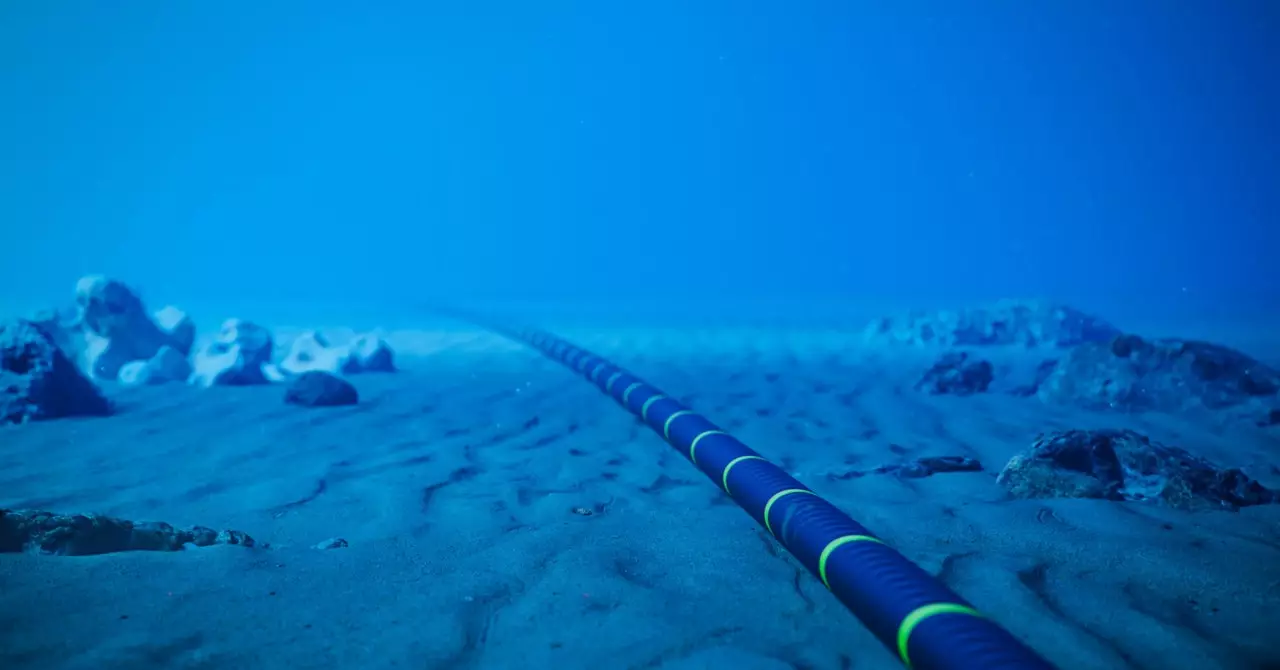The digital age we inhabit is primarily governed by the efficacy of internet connectivity, which is a crucial enabler of progress and innovation. The recent announcement from Meta concerning the Waterworth Project marks a significant stride in enhancing global internet infrastructure. The undertaking promises an extensive undersea cable network extending over 50,000 kilometers, aimed at connecting five continents. This ambitious initiative reflects Meta’s commitment to bolstering its service management and ensuring an advanced infrastructure, particularly vital for the burgeoning field of artificial intelligence.
Submarine cables play a pivotal role in our interconnected world, facilitating more than 95 percent of international internet traffic. The Waterworth Project, with its intended capacity and length, not only represents technological ambition but also serves a functional purpose that aligns with the demands of an increasingly digital world. By introducing three new oceanic corridors, this project seeks to enhance the reliability and speed of data transmission, thereby providing the foundation necessary for widespread AI applications that require substantial bandwidth.
Among the project’s notable features are its strategic landing points that include countries like India, Brazil, the United States, and South Africa. Each location was chosen not just for its geopolitical significance, but also for its potential to harness the benefits of improved connectivity. For instance, in India, a country recognized for its rapid growth in digital infrastructure, the project promises to empower local innovations and foster a robust digital economy. The potential benefits extend beyond mere connectivity; they encompass economic growth, job creation, and knowledge dissemination.
Such advancements echo the sentiments expressed in a joint statement by former President Donald Trump and Indian Prime Minister Narendra Modi, which underscored collaborative commitments to enhance connectivity. The inclusion of Project Waterworth in this context highlights the project’s importance in international relations and digital diplomacy, revealing how infrastructure initiatives can serve as catalysts for deeper cooperation between nations.
The Waterworth Project’s ambitious scale comes with significant engineering challenges. Meta aims to utilize advanced cable architecture featuring 24 fiber pairs, designed to support deep-water routing capabilities of up to 7,000 meters. These features are not merely for construction’s sake; they are integral in ensuring the resilience and efficiency of the network. Enhanced burial techniques are also being implemented to mitigate risks associated with external factors such as ship anchors, which have historically posed threats to undersea cables.
Through innovations like these, Meta is not only investing in its future but also raising the bar across the technology sector. The lessons learned and technologies developed through the construction of this cable could become industry standards, influencing how future projects are approached by competitors and collaborators alike.
The emergence of the Waterworth Project places Meta in direct competition with other tech giants such as Google, Amazon, and Microsoft, all of which have made significant investments in undersea cables. While Google operates numerous cable routes, some owned exclusively by the company, Meta’s ambition to completely own the Waterworth Project sets a distinctive precedent. This competition is crucial in a landscape where digital connectivity is the backbone of service provision, impacting millions of users globally via platforms like Facebook, Instagram, and WhatsApp.
With the increasing significance placed on data privacy and security, Meta’s ownership of its undersea cable infrastructure signifies a pronounced shift towards greater control over data sovereignty. As the company aims to ensure uninterrupted global service delivery, it simultaneously counters concerns raised in various geopolitical contexts over data management and infrastructure dependencies.
Meta’s Waterworth Project is set to reshape the contours of digital connectivity as we know it. By building a robust, extensive undersea cable network, the company not only enhances its service reliability but also pushes forward the capabilities surrounding AI and other innovative technologies. The strategic collaboration with various global partners, along with careful consideration of local market conditions, underscores the project’s multifaceted impact. As Meta embarks on this ambitious journey, it sends a clear message regarding the vital importance of resilient, high-speed internet infrastructure in our interconnected world. The implications are vast, touching on economic prosperity, technological advancement, and international collaboration, marking a significant milestone in the evolution of global internet networks.


Leave a Reply